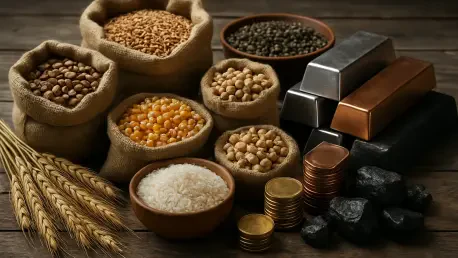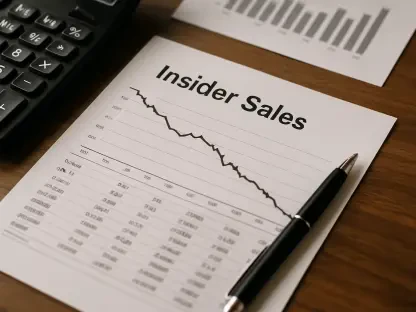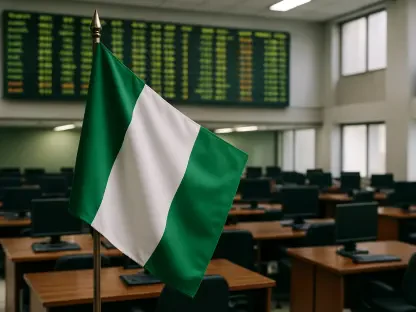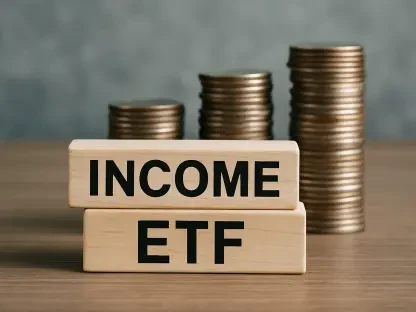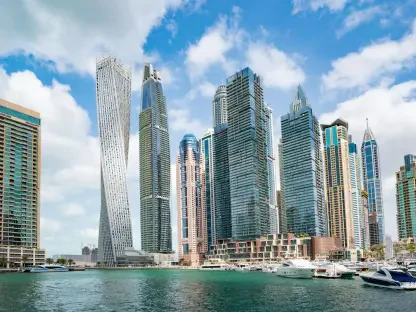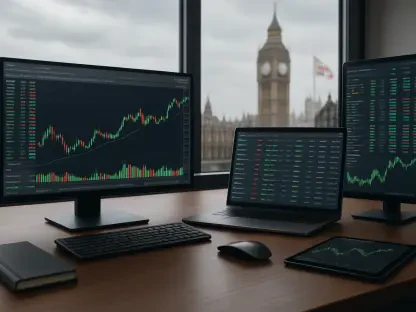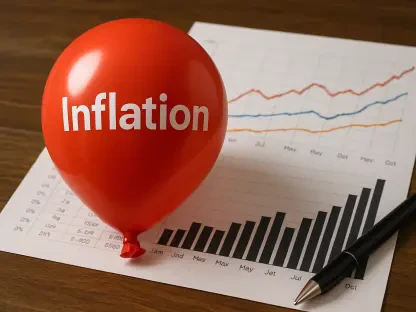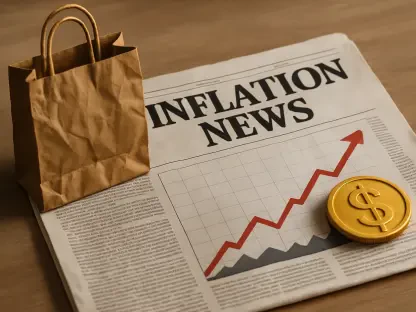In the heart of 2025, the commodity market emerges as a battleground of global economic forces, where geopolitical tensions, technological revolutions, and environmental imperatives collide to shape the value and availability of essential resources. Commodities—ranging from industrial metals to agricultural goods—serve as the lifeblood of industries and a mirror to the world’s economic health, drawing intense focus from investors and policymakers navigating a landscape marked by uncertainty. These tangible assets are not just raw materials; they are strategic tools in a world grappling with inflation, supply chain fractures, and the accelerating shift toward sustainable systems. This exploration seeks to unpack the intricate drivers behind market movements, shedding light on why these resources hold such critical importance today.
Far beyond mere goods, commodities act as barometers of broader societal challenges, reflecting priorities like food security, energy access, and technological advancement. Their dual role as physical necessities and financial instruments amplifies their volatility, making them both a risk and a stabilizer in turbulent times. From the copper fueling electric vehicle production to the grains sustaining global populations, each sector tells a story of adaptation amid disruption. The stakes are high, as sudden shocks—be they climatic or political—can ripple through economies with staggering speed. This analysis avoids speculative price predictions, instead focusing on structural trends and systemic forces that define the current commodity landscape, offering a grounded perspective on a world in flux.
Key Trends Shaping the Commodity Landscape
Energy Transition and Its Impact
Renewable Energy’s Demand Surge
The relentless global push toward renewable energy stands as a transformative force in the commodity market, fundamentally altering demand for materials like copper, lithium, and nickel, which are indispensable for electric vehicles, wind turbines, and solar panels. This shift isn’t merely a trend but a structural overhaul, as nations commit to carbon reduction targets, driving unprecedented need for these metals to build the infrastructure of a cleaner future. However, supply constraints loom large, with years of underinvestment in mining operations creating bottlenecks that threaten to derail progress. The urgency to electrify transportation and power grids has positioned these commodities at the forefront of market dynamics, with their availability directly tied to the pace of global sustainability goals. Industries dependent on these resources face a tightrope walk between innovation and scarcity, as the gap between supply and demand continues to widen.
Transitional Fuels and Energy Security
Natural gas and liquefied natural gas (LNG) hold a unique position as transitional fuels, balancing the immediate need for reliable energy with longer-term environmental aspirations. Their role is particularly pronounced in regions like Europe and Asia, where energy security concerns have led to a surge in long-term contracts to ensure steady supplies. The United States, as a leading exporter, plays a pivotal part in this equation, reinforcing global trade networks for these resources. Yet, challenges persist, with seasonal demand fluctuations and infrastructure limitations adding layers of unpredictability to the market. These fuels are a pragmatic compromise, offering lower emissions than coal while providing a stable energy backbone as renewables scale up. Their significance lies in bridging the gap during this era of transition, though their market remains sensitive to geopolitical and logistical disruptions that can swiftly alter accessibility and pricing.
Economic Uncertainty and Financial Dynamics
Inflation and Currency Pressures
Economic turbulence, characterized by persistent inflation and fluctuating currencies, casts a heavy shadow over commodity prices, impacting everything from industrial metals to agricultural staples. Precious metals like gold have emerged as go-to safe havens for investors seeking stability amid market unrest, while other sectors grapple with escalating production and transportation costs that squeeze margins. Central bank policies, particularly adjustments to interest rates, further complicate the landscape by influencing currency strength, which in turn affects the affordability of commodities priced in U.S. dollars on the global stage. This financial interplay creates a ripple effect, where monetary decisions in one region can disrupt supply chains and demand patterns worldwide. For industries reliant on these materials, such uncertainty translates into a constant need for adaptive strategies to mitigate the impact of cost volatility and maintain operational stability.
Financial Markets and Speculative Forces
Commodities straddle a unique space as both physical necessities and speculative assets within financial markets, a duality that intensifies their price volatility and underscores their role as indicators of economic sentiment. Traded on exchanges, these resources often reflect broader shifts in investor confidence, with sharp price movements signaling underlying anxieties or optimism about global growth. This speculative dimension can amplify real-world supply and demand imbalances, as market participants react to news cycles and policy shifts with rapid buying or selling. The result is a feedback loop where financial perceptions influence industrial realities, and vice versa, creating a complex web of interactions. Understanding this dynamic is crucial for stakeholders, as commodities often serve as early warning signs of economic downturns or recoveries, shaping strategic decisions across sectors in an unpredictable environment.
Sector-Specific Drivers in a Volatile Landscape
Industrial Metals and Critical Minerals
Electrification’s Core Materials
At the heart of the industrial metals sector, copper stands tall as the linchpin of electrification, vital for power transmission in electric vehicles and renewable energy grids. Often referred to as the metal of the future, its demand has soared with the global drive toward sustainability, yet supply struggles to keep pace due to chronic underinvestment in mining over recent years. This imbalance has fueled upward price pressure, positioning copper as a focal point for market watchers and policymakers alike. Similarly, lithium and cobalt, essential for battery technologies, face their own market complexities, with regional oversupply in some areas clashing against rising production costs elsewhere. These materials are not just commodities but the backbone of technological progress, directly tied to the speed at which societies can transition to cleaner, smarter systems. Their scarcity or abundance will dictate the trajectory of entire industries in the near term.
Strategic Importance of Rare Earths
Rare earths and critical minerals have transcended their status as niche resources to become central to national security and industrial independence, given their indispensable role in high-tech and defense applications. From semiconductors to advanced weaponry, these materials underpin cutting-edge innovation, making their supply a matter of intense international competition. Governments worldwide are actively seeking to diversify sourcing and enhance recycling initiatives to reduce dependence on a handful of dominant suppliers, reflecting a broader strategic shift. This race for access is reshaping trade policies and investment priorities, as nations recognize the risks of over-reliance on limited supply chains. The push for sustainable extraction and circular economies adds another dimension, with technology playing a key role in mitigating scarcity. As this sector evolves, its influence on global economic and political dynamics is expected to grow, marking it as a critical area of focus for years ahead.
Precious Metals as Safe Havens
Gold’s Enduring Stability
Gold continues to shine as a timeless refuge for investors navigating the choppy waters of economic and geopolitical uncertainty in 2025, with its value bolstered by persistent inflation concerns and global instability. Central banks have ramped up reserves, viewing it as a hedge against currency devaluation, while retail demand for jewelry and bullion remains robust across key markets. This sustained interest underscores gold’s role as a store of value, even as short-term price fluctuations test investor patience. Unlike other commodities tied to industrial cycles, its appeal lies in its detachment from direct consumption trends, offering a counterbalance to riskier assets. As a barometer of market sentiment, gold’s performance often signals deeper shifts in confidence, providing a stabilizing force when other sectors falter. Its enduring relevance ensures it remains a cornerstone of financial strategies amid ongoing volatility.
Dual Roles of Silver and Platinum
Silver and platinum carve out distinctive niches within the precious metals space, balancing industrial utility with financial allure in a way that sets them apart from gold. Silver’s demand is increasingly driven by its critical role in electronics and solar panel production, aligning it with the renewable energy boom, while platinum gains traction for applications in hydrogen fuel cells and catalytic converters essential for cleaner automotive technologies. Simultaneously, both metals serve as alternative stores of value for investors wary of economic downturns, reflecting broader activity and innovation trends. Their price movements offer unique insights into the intersection of technological advancement and market stability, acting as dual-purpose indicators. This versatility positions them as vital components of the commodity ecosystem, with their trajectories closely watched by those tracking both industrial progress and financial resilience in an uncertain global landscape.
Energy and Agricultural Challenges
Natural Gas as a Bridge Fuel
Natural gas, alongside its liquefied form (LNG), holds a strategic spot in the energy mix, serving as a lower-emission alternative to coal while providing a reliable power source during the gradual shift to renewables. Its significance is especially evident in regions prioritizing energy security, with Europe and Asia securing long-term supply contracts to safeguard against disruptions. The United States has solidified its position as a major exporter, strengthening global trade ties in this sector. However, the market faces persistent hurdles, including seasonal demand spikes and infrastructure constraints that can limit delivery capabilities. These challenges highlight the delicate balance between maintaining energy stability and advancing environmental goals. As a bridge fuel, natural gas occupies a pragmatic middle ground, ensuring continuity in power generation while cleaner alternatives scale up, though its sensitivity to external shocks remains a key concern for stakeholders.
Agricultural Volatility Amid Climate Shifts
Agricultural commodities such as cocoa, coffee, and grains are caught in a storm of volatility, battered by climate-driven challenges and logistical disruptions that threaten global food supplies. Extreme weather patterns, including droughts and floods, have slashed yields in key producing regions, while aging crops and labor shortages compound the strain on output. These factors create unpredictable price swings, impacting everything from local farmers to international markets. Beyond natural forces, trade policies and regional conflicts further disrupt supply chains, amplifying concerns over food security on a global scale. Governments and organizations are increasingly forced to intervene with measures aimed at stabilizing access to these essentials. The fragility of this sector serves as a stark reminder of the interconnected risks facing commodities, where environmental and human factors converge to shape availability and affordability for billions.
Broader Risks and Strategic Shifts
Geopolitical and Environmental Pressures
Power Plays and Resource Control
Geopolitical rivalries are increasingly turning commodities into instruments of power, as nations compete for control over vital resources ranging from rare earths to energy supplies. Tensions manifest through trade tariffs, export restrictions, and strategic stockpiling, disrupting established supply routes and heightening risks for industries dependent on consistent access. This chess game of resource dominance has elevated commodities to matters of national interest, prompting governments to prioritize domestic production and forge new alliances to secure flows. The implications extend far beyond market prices, influencing diplomatic relations and economic strategies on a global scale. As supply chains become battlegrounds, the need for resilience and diversification grows, with countries reevaluating dependencies to safeguard against sudden geopolitical shocks. This dynamic underscores the high-stakes nature of resource management in today’s interconnected world.
Climate Constraints and Green Imperatives
Climate change and environmental regulations are profoundly altering the commodity landscape, imposing constraints on production while simultaneously spurring demand for materials linked to sustainable solutions. Agricultural sectors bear the brunt of erratic weather, with extreme conditions slashing harvests and driving price volatility, while mining operations face stricter rules that raise costs and limit access to resources. Conversely, the global emphasis on green technologies fuels appetite for metals like copper and lithium, essential for clean energy infrastructure. This push-pull dynamic creates a complex environment where traditional production methods are challenged, yet opportunities arise for innovation in recycling and efficiency. Balancing these opposing forces is a central task for industries and policymakers, as the drive for sustainability reshapes how commodities are sourced and utilized. The tension between restriction and growth defines much of the current market narrative.
Navigating Future Horizons
Adapting to a Changing Market
Reflecting on the commodity market dynamics of 2025, it becomes evident that these resources are not merely economic inputs but pivotal markers of global adaptation. Sectors like industrial metals and critical minerals captured attention for their role in electrification, while precious metals provided a steady anchor during economic storms. Energy and agricultural commodities, meanwhile, highlighted the fragility and urgency of balancing immediate needs with long-term environmental goals. Each segment revealed distinct vulnerabilities and strengths, shaped by an intricate web of geopolitical, climatic, and financial pressures. The volatility that defined this period underscored the necessity for agility among industries and governments, as they grappled with sudden disruptions and shifting priorities. Looking back, the interplay of these forces painted a vivid picture of a world in transition, where commodities stood at the crossroads of progress and uncertainty.
Building Resilience for Tomorrow
As the dust settles on the challenges of 2025, the path forward demands a proactive stance, with a focus on strengthening supply chains through diversification and investing in sustainable practices to mitigate environmental risks. Technological innovation emerges as a linchpin, offering solutions like advanced recycling to ease scarcity and new extraction methods to reduce ecological impact. Nations and industries need to prioritize collaboration, forging partnerships that can withstand geopolitical friction and ensure stable access to critical resources. Keeping a pulse on emerging trends, from energy advancements to climate adaptations, becomes essential for anticipating shifts in demand and supply. By embracing flexibility and forward-thinking strategies, stakeholders can transform volatility into opportunity, laying the groundwork for a more resilient commodity market in the years that follow. This approach promises not just survival, but a redefined role for resources in shaping a balanced global economy.
